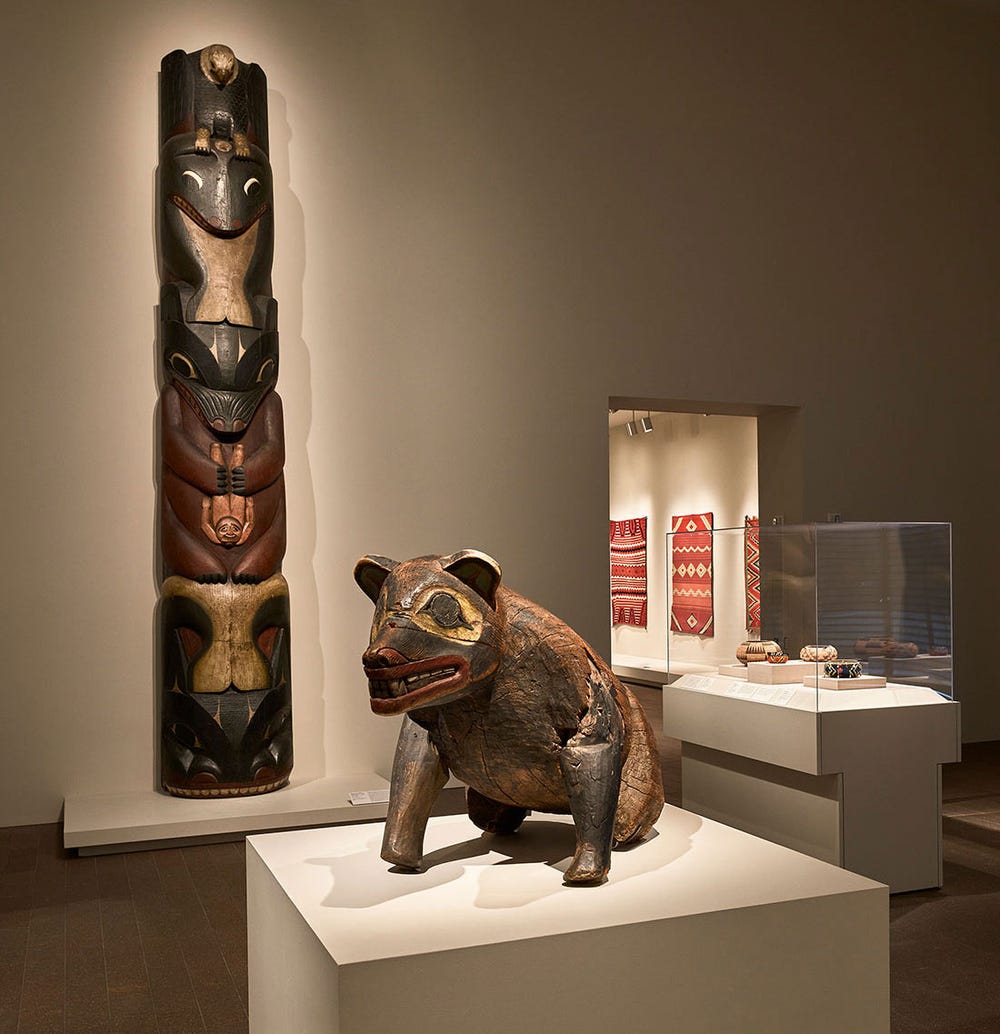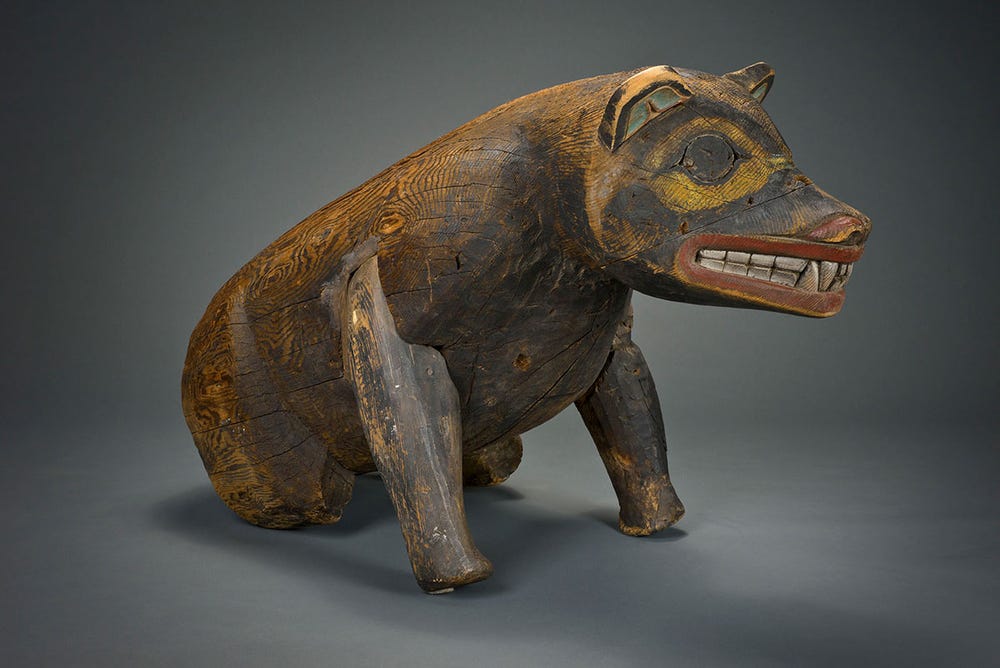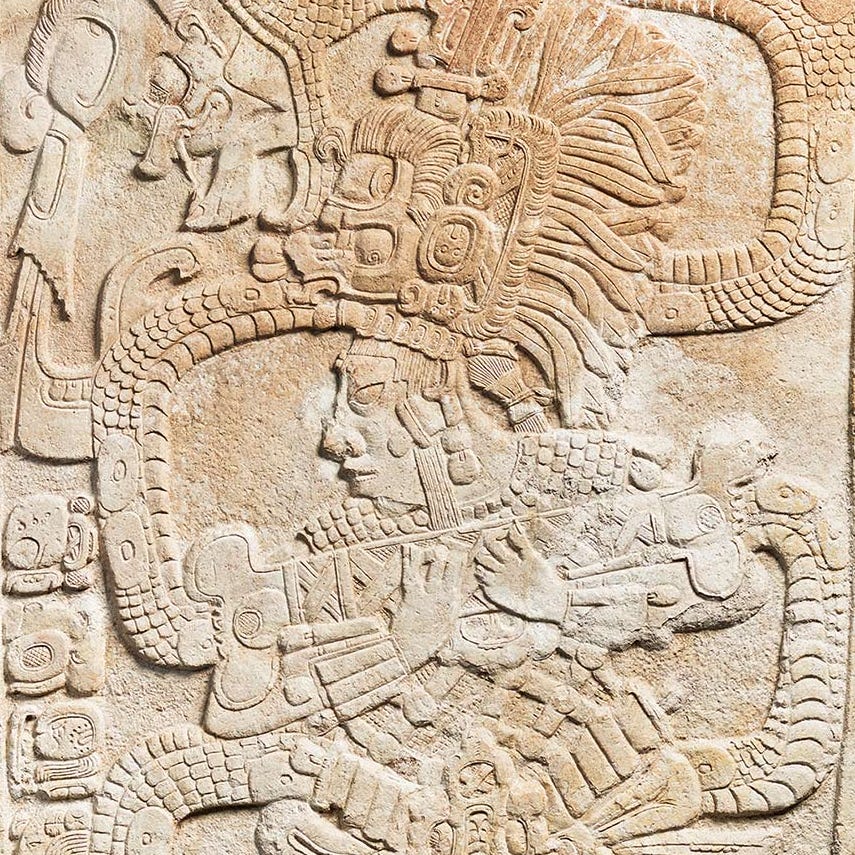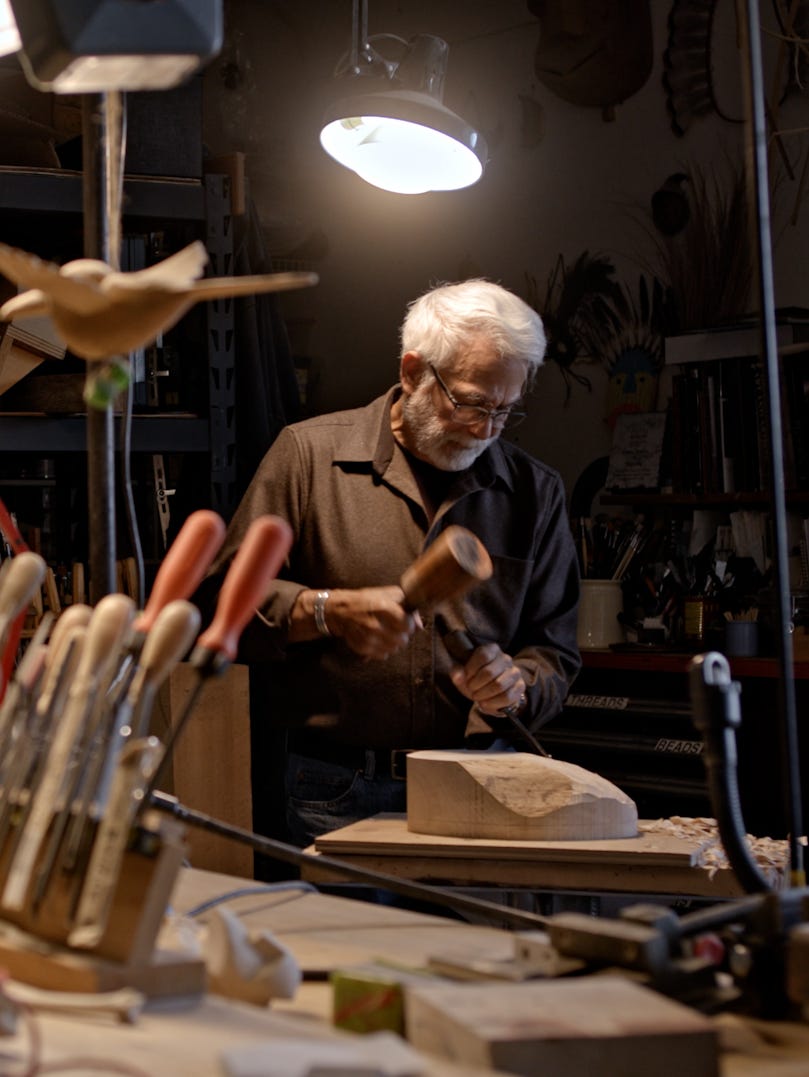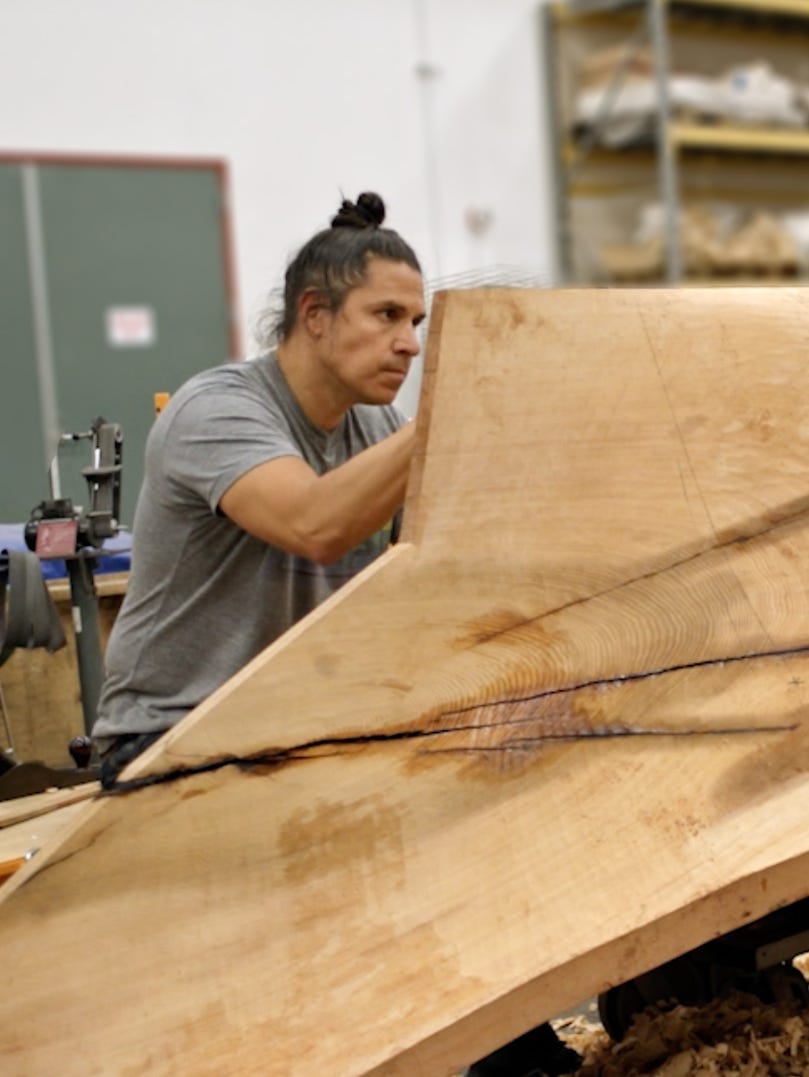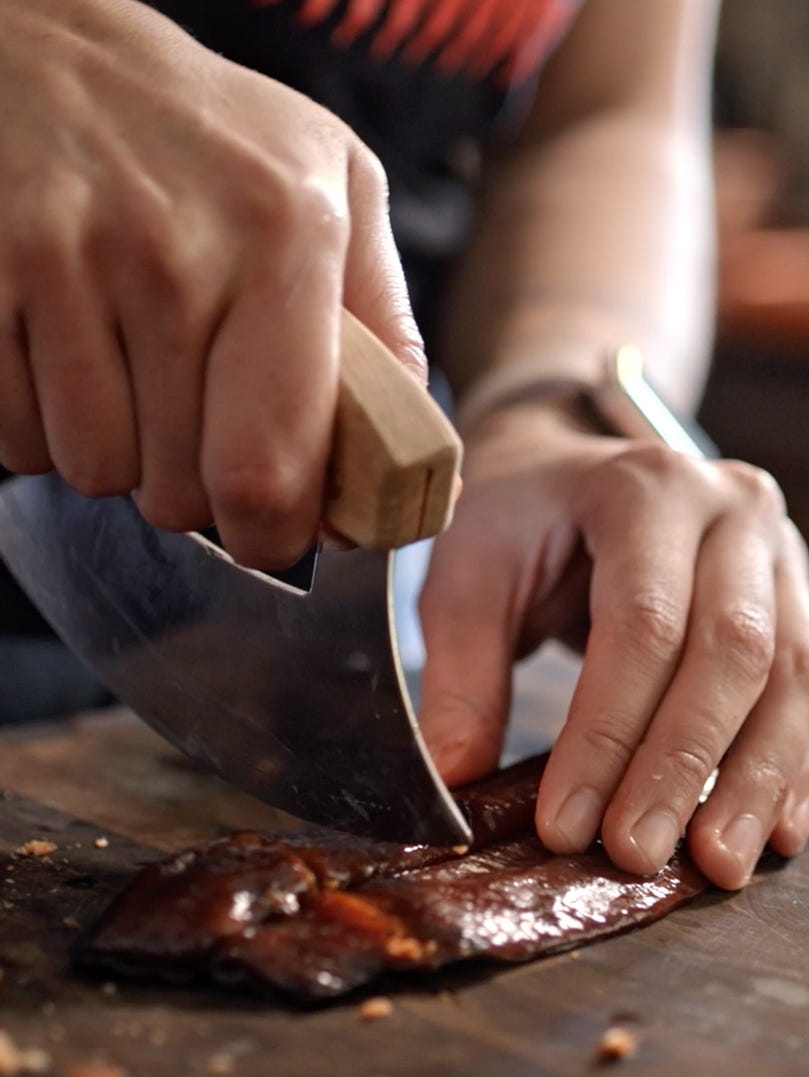The ongoing installation, Native Artists of Western North America, spans over one thousand years of artistic expression. It encompasses diverse peoples and places and provides a glimpse of the natural, cultural, and spiritual worlds of these Native artists from western North America. The works on view reveal the aesthetic sensibilities and technical mastery of the artists who made them: potters transform the earth into clays and pigments; weavers gather fiber from plants and animals; and carvers search for trees that will yield strong, even wood that can be chiseled, shaped, and smoothed.
The installation is punctuated by several large wood carvings, including a totem pole made by a Tsimshian artist(s), and a Haida bear figure that was once owned by Andy Warhol.
One early—and physically impressive —work that anchors the installation of Native Artists of Western North America is the de Young’s monumental totem pole. Known to generations of visitors, it is on view for the first time since the opening of the new de Young museum building. Made for sale by a Tsimshian carver, the pole depicts, from top to bottom: an eagle, an orca, a grizzly bear, and a sculpin. The grizzly bear holds a human figure upside down by its feet. A compelling detail on the pole can be spotted only from afar: a small human face peers out of the orca’s blowhole, perhaps the subject of the eagle’s hungry gaze.
The totem pole was donated to the museums in 1900 by Captain Gustave Niebaum, a cofounder of the Alaska Commercial Company and the former owner of Inglenook Winery in Rutherford, California. It was first installed in the North American Indian Hall of the original Memorial Museum building, placed, remarkably, above a doorway between galleries.
Installation view of Native Artists of Western North America showing totem pole and bear effigy
In front of the totem pole sits another large sculpture from the Northwest Coast: a bear effigy carved in the late nineteenth century by a Haida artist. The impressive work, once in the personal collection of Andy Warhol, was donated to the museums in 2013 by the Thomas W. Weisel Family. The bear is rendered at about half-scale and was likely part of a tall wooden post. It would have represented the crest of the artist, his patron, or his community. This bear was an expression of identity and status and is a testament to the knowledge and skill of its makers.
Haida artist, Bear effigy, ca. 1870. Canada, Haida Gwaii. Yellow cedar and pigment. Length: 44 1/2 in. (113 cm). Fine Arts Museums of San Francisco, Gift of the Thomas W. Weisel Family, 2013.76.126
Both this sculpture and the totem pole were expertly carved from the trunks of cedar trees. Not just any cedar could have been used for such robust sculptures. A specialist must have searched the forests for a tree that was tall and straight, with even grain and minimal knots, which grew close enough to a body of water in order to transport it back to the carver.
Hillary Olcott is Assistant Curator, Arts of Africa, Oceania, and the Americas. Text adapted from “A New Installation at the de Young: Native Artists of Western North America” in Tribal Art, Summer 2018.

